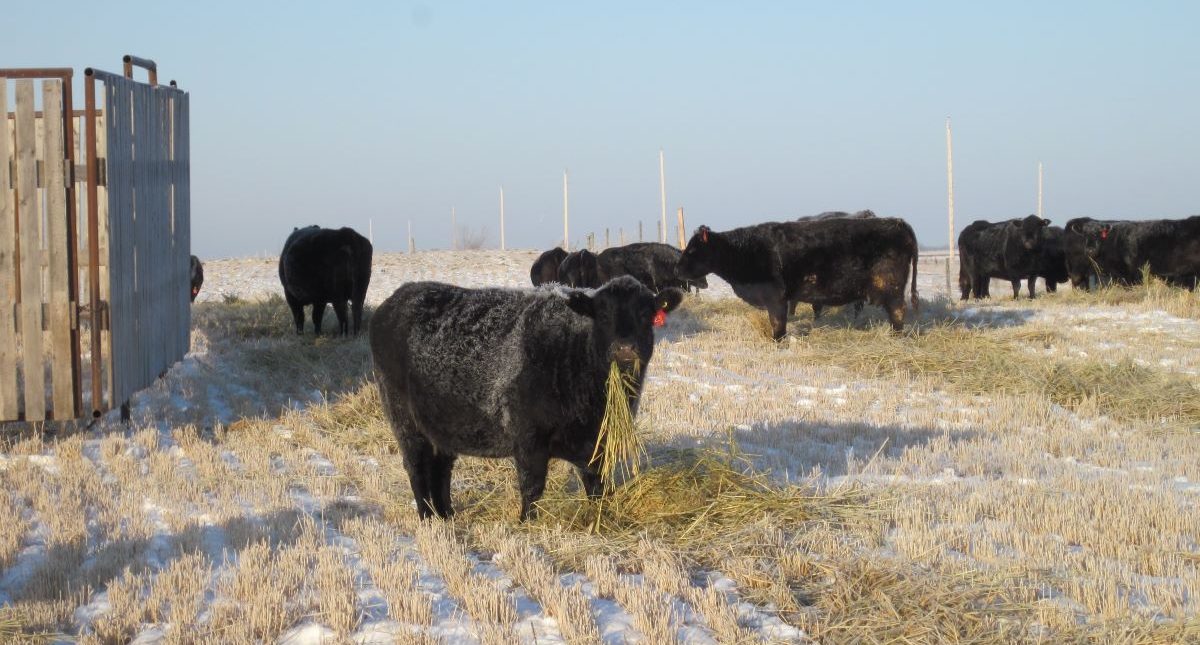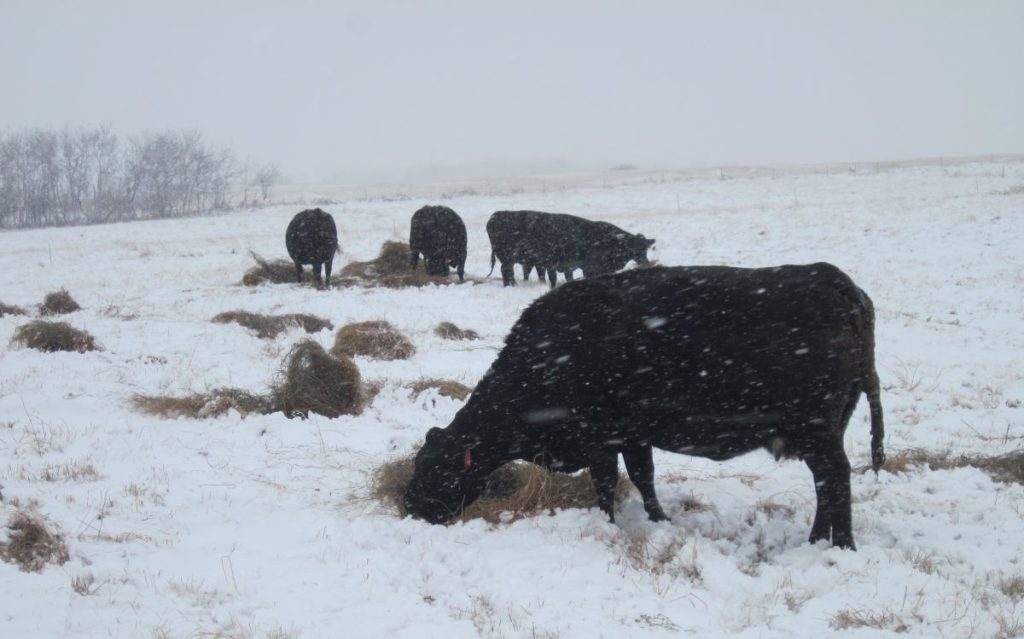AB Direct - Steers
Rail: 492.00-498.50 FOB feedlot (last week)
AB Direct - Heifers
Rail: 492.00-498.50 FOB feedlot (last week)
US Trade- Steers
Rail: 380.00 NE, IA (last week)
US Trade - Heifers
Rail: 380.00 NE, IA (last week)
Canadian Dollar
0.04

The productivity pluses of winter grazing
Winter grazing has productivity pluses, including reduced costs for feed and labour and improved soil fertility. We spoke to three grazing experts to collect some research data and pro tips that will help you maximize the pluses of winter grazing.
According to the Western Canadian Cow Calf Survey, a high percentage of beef producers have already integrated winter grazing into their operations, and for good reason. “When it’s done well, winter grazing is cheaper than feeding conventionally with hay or silage,” says Vern Baron, research scientist, Agriculture and Agri-Food Canada at Lacombe. Baron has been working in forage production and grazing for nearly 30 years.
“If you’re feeding hay in a yard or feedlot, you have to harvest, haul, and feed with equipment. All of that costs more each day than having cows graze in the field,” Baron says.

The biggest savings occur through reduced labour, feed, and fuel costs, but there is also an upside on the backend – no manure to haul, and improved soil fertility. “People sometimes find they can actually increase the size of their herd by going into these practices,” says Baron.
“The number one way to reduce the cost of production is to let animals feed themselves,” agrees Edward Bork, professor in the faculty of Agricultural, Life, and Environmental Sciences, University of Alberta.
Bork has just completed a comprehensive on-farm study in the Prairie Provinces using adaptive multi-paddock (AMP) grazing. AMP grazing is a form of rotational grazing that involves managing where, when, and how often animals graze in a given location. Producers using AMP grazing were found to extend the grazing season longer in both the spring and fall.
“When producers use cross fencing to create smaller pastures, they get better control over the length of the grazing period, and also force animals to harvest forage more uniformly. As a result, they get improved use of what’s there, and because they are moving their animals often, you get an extended rest period that helps plant regrowth,” Bork explains.
The study data suggest an increase in plant biomass production, despite higher utilization levels. “The take-home conclusion of the AMP grazing study is that how you let animals graze on forage has an impact on pasture performance. By using high-density grazing events with a long recovery period, we see an increase in the amount of biomass produced, a faster rate of water infiltration, and a trend toward storing more carbon in the top layer of soil,” says Bork.
Rotational forage grazing is one way to diversify winter feeding opportunities. Some other options include stockpiled grass, swath grazing, and bale grazing. In every case, field grazing supports improved soil fertility, explains Bart Lardner, professor in the Department of Animal and Poultry Science, University of Saskatchewan.
Compared to pen feeding, field grazing results in far better nutrient distribution. “Nitrogen is a very mobile nutrient. If we feed in pens, by the time we clean them out weeks or months later, we’ve lost a lot through runoff, volatilization, and gassing off. What we’re spreading on the field is 50 per cent or less than what was deposited when those cattle were being fed in that space and time,” Lardner explains.
In fact, research has shown a two- to three-fold increase in biomass where cows grazed compared to where manure was spread with equipment. Lardner adds, “Beef cows are great recyclers, consuming low-quality, high-fibre forages, while depositing fertilizer on the land through manure and urine.”
There are many pluses, but there are also risks associated with winter grazing. The weather is never predictable and harvest levels aren’t reliable. Water and wind shelter must be available. The protection against loss is to have two or three feeding options in your back pocket. All sources agree: make sure you have a plan B.
Finally, be sure animals get adequate nutrient and energy intake from whatever winter feeding system you use, especially later in the gestation period. “You can get away with lower quality [feed] early in gestation, but the energy requirement really increases during later gestation. There’s no mathematical formula that will help you here, but you have to have enough feed for your cows,” Baron concludes.
This article was first published in Volume 3 Issue 1 of ABP Magazine (February 2023). Watch for more digital content from the magazine on ABP Daily.

